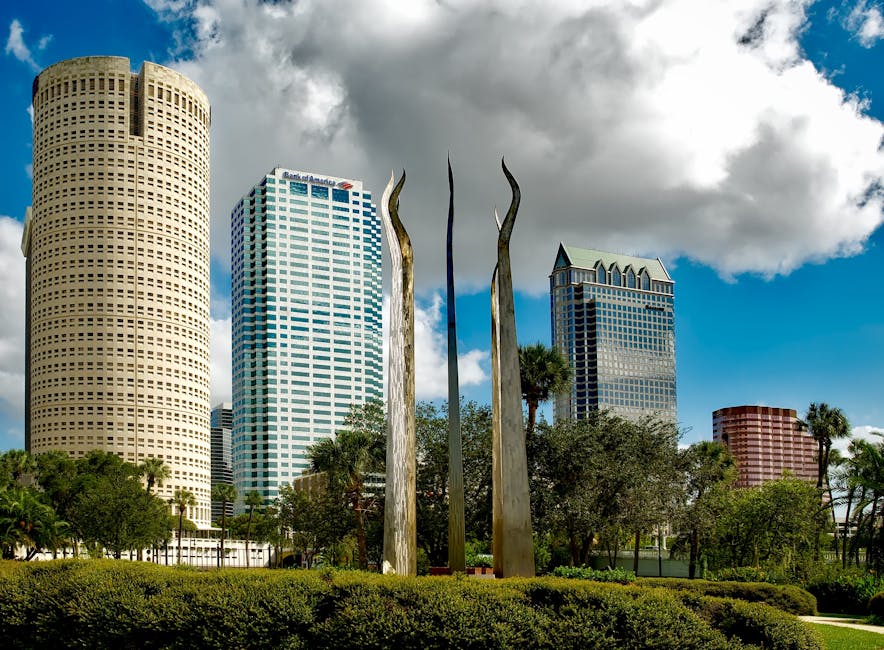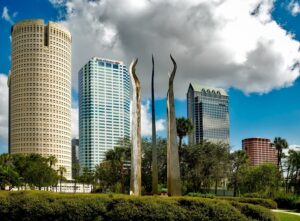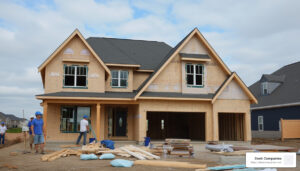City of Tampa Land Development Code: Top 5 Pro Tips
City of Tampa Land Development Code: This essential guide outlines how land can be used and evolved within Tampa. Designed to meet the city’s growing demands, it is structured to be more logical, visual, and precise. Here’s what you need to know:
- User-Friendliness: The code is being revamped to be easier to understand.
- Community Involvement: Residents are encouraged to participate in shaping the code.
- Development Standards: Higher standards for development are being established.
- Improved Visuals: The inclusion of photos and diagrams aids comprehension.
Tampa is starting on a significant project called “Tampa Forward: Building Tomorrow Together,” aiming to revamp the city’s land development framework. This initiative focuses on updating the Land Development Code (LDC) over two years, with a push for involvement from local residents. The objective is to align the LDC with Tampa’s Comprehensive Plan, ensuring that the city’s growth is sustainably managed and that its neighborhoods thrive.
At Deeb Companies, we pride ourselves on our expertise in navigating the city of tampa land development code, backed by decades of experience in changing landscapes and creating homes that uphold quality and purpose.

Understanding the City of Tampa Land Development Code
The City of Tampa Land Development Code is a comprehensive framework that dictates how land can be used and developed within Tampa. It’s largely contained within Chapter 27 of the Code of Ordinances and is intricately linked to the city’s Future Land Use Map, as well as its Goals, Objectives, and Policies.
Chapter 27: The Heart of Land Development
Chapter 27 is the backbone of Tampa’s land development regulations. It covers everything from zoning districts to historic preservation, ensuring that all developments align with the city’s vision for growth and sustainability. This chapter is crucial for anyone looking to develop land in Tampa, as it provides the detailed rules and guidelines that must be followed.
Future Land Use Map: Planning for Tomorrow
The Future Land Use Map is a visual representation of Tampa’s long-term planning goals. It shows how different areas of the city are designated for various types of development, such as residential, commercial, or industrial. This map is vital for understanding where specific types of developments are encouraged or restricted, helping developers and residents alike to plan accordingly.
Goals and Policies: Guiding Principles
The Goals, Objectives, and Policies outlined in the city of tampa land development code are designed to support sustainable growth and improve the quality of life for all residents. These guiding principles focus on:
- Sustainability: Promoting eco-friendly development and conservation of resources.
- Community Well-being: Ensuring developments contribute positively to neighborhoods.
- Economic Growth: Encouraging developments that boost the local economy and create jobs.
These elements work together to shape Tampa’s development landscape, ensuring that the city grows in a way that is both strategic and beneficial for its residents.
By understanding these components of the Land Development Code, developers and residents can better steer the complexities of land use in Tampa. At Deeb Companies, we use our deep knowledge of these regulations to guide our projects, ensuring compliance and fostering developments that align with Tampa’s vision for the future.
Key Amendments and Their Implications
Navigating the City of Tampa Land Development Code can be a challenge, especially when it comes to understanding the latest amendments. Let’s break down some key changes and what they mean for residents and developers alike.
Amendment 24-1: Expanding ADU Special Use Areas
Amendment 24-1 modifies Section 27-156, expanding the areas where Accessory Dwelling Units (ADUs) can be built. This change opens up new neighborhoods for ADU development, providing more options for homeowners looking to add these versatile units. ADUs can serve as rental properties, guest houses, or even home offices, offering flexibility in property use.
Amendment 24-2: Revising Special Use Criteria for ADUs
Amendment 24-2 updates the criteria governing ADUs under Section 27-132. This amendment responds to feedback from the City Council and the public, aiming to streamline processes and address community concerns. By refining these criteria, the city hopes to make ADU development more accessible while maintaining neighborhood integrity.
Amendment 24-4: Protecting Historic Structures
Historic preservation takes center stage with Amendment 24-4. This amendment, affecting Sections 27-100, 27-117, and 27-326, enforces stricter penalties for damaging historic structures. The city can now impose fines up to $15,000 for irreparable damage, aligning with Florida Statute Section 162.09. This underscores Tampa’s commitment to preserving its rich architectural heritage.

Amendment 24-5: Front Porch Projections
Homeowners and builders will appreciate Amendment 24-5, which simplifies the process for front porch construction. By removing the need for a Design Exception or Variance for porches encroaching into front yards, this amendment makes it easier to add these charming and functional spaces to homes.
Amendment 24-6: Enhancing Parking Lot Safety in Ybor City
Amendment 24-6 addresses safety concerns in Ybor City’s parking lots, as per Sections 27-177 and 27-178. This amendment follows a council motion to improve security measures, particularly focusing on personnel requirements. By tightening these regulations, the city aims to improve the safety and security of this busy area.
These amendments reflect Tampa’s ongoing efforts to balance growth, community needs, and historical preservation. Understanding these changes is crucial for anyone involved in land development or property ownership in the city. At Deeb Companies, we stay updated on these developments to ensure our projects align with Tampa’s evolving landscape.
Navigating the Amendment Process
Understanding the City of Tampa Land Development Code is essential for anyone involved in property development or ownership. But how do these amendments come to be? Let’s explore the process that shapes these important changes.
City Council Workshop
The amendment process kicks off with a City Council Workshop. This is where conceptual amendments are discussed, though no draft text is involved at this stage. For instance, the workshop for the July 2024 amendment cycle is scheduled for February 22, 2024. These workshops allow council members and stakeholders to explore ideas and set priorities without getting bogged down in the specifics of legal language.
Public Information Meeting
Next up is the Public Information Meeting. This is a critical step where the public is invited to learn about the proposed amendments. For the July 2024 cycle, this meeting is slated for March 19, 2024. It’s a chance for residents, developers, and other interested parties to get insights into potential changes and voice their opinions. These meetings often cover multiple amendments, like the recent ones on ADUs, historic preservation, and parking lot safety.
Planning Commission
After gathering public input, the proposed amendments head to the Planning Commission. The commission plays a pivotal role in reviewing and refining the amendments before they are finalized. In the July 2024 cycle, a briefing is scheduled for May 13, 2024, followed by a public hearing on June 10, 2024. The Planning Commission ensures that the amendments align with the city’s comprehensive plan and address community needs effectively.
Navigating this process might seem daunting, but it’s designed to be inclusive and thorough. Each step allows for feedback and refinement, ensuring that the final amendments serve the best interests of Tampa’s residents and align with the city’s growth and preservation goals.

By staying informed and participating in these stages, you can help shape the future of Tampa’s development landscape. At Deeb Companies, we actively engage in this process to ensure that our projects not only meet but exceed city standards and community expectations.
How the City of Tampa Land Development Code Affects Home Development
The City of Tampa Land Development Code plays a crucial role in shaping how homes are built and modified. Let’s explore some key aspects: Accessory Dwelling Units, Historic Structures, and Design Exceptions.
Accessory Dwelling Units (ADUs)
Accessory Dwelling Units, often known as granny flats or in-law suites, offer a flexible housing option. They are smaller, secondary homes located on the same lot as a primary residence. Tampa’s LDC has specific regulations for ADUs to ensure they blend with the neighborhood’s character.
- Benefits: ADUs provide affordable housing solutions and increase property value. They can be used for rental income or as living spaces for family members.
- Regulations: Tampa’s code outlines size limits, setbacks, and parking requirements. For example, ADUs must not exceed a certain percentage of the main home’s size.
Historic Structures
Preserving Tampa’s rich history is a priority, and the LDC includes provisions for Historic Structures. These rules protect buildings with historical significance, ensuring they maintain their unique charm while allowing for modern use.
- Preservation: Owners of historic properties may need to follow specific guidelines when making alterations. This ensures that any renovations respect the building’s original architecture.
- Incentives: There are often incentives available, such as tax abatements, for owners who adhere to preservation guidelines.
Design Exceptions
Sometimes, a project doesn’t fit neatly into the existing code. That’s where Design Exceptions come in. They allow for flexibility in home development while maintaining the integrity of the community.
- Process: To obtain a design exception, developers must demonstrate that their project meets the city’s goals and does not negatively impact the neighborhood.
- Examples: Exceptions might be granted for unique architectural designs or when a project offers significant community benefits.
Understanding these aspects of the City of Tampa Land Development Code can help you steer home development with ease. Whether you’re building an ADU, preserving a historic home, or seeking a design exception, knowing the code ensures your project aligns with Tampa’s vision for growth and preservation.
Frequently Asked Questions about the City of Tampa Land Development Code
What is the purpose of the Land Development Code?
The City of Tampa Land Development Code (LDC) is a set of rules that guides how land is used and developed in Tampa. Its main goal is to ensure orderly growth and development while preserving the city’s character and environment. The LDC covers everything from zoning regulations to building standards, ensuring that new developments and renovations align with Tampa’s vision for a vibrant and sustainable community.
- Structure: The LDC is divided into several articles, each focusing on different aspects of land development, such as zoning districts, historic preservation, and supplemental regulations.
- Benefits: By following the LDC, developers and homeowners contribute to a well-planned city that balances growth with quality of life.
How can I participate in the amendment process?
Community involvement is crucial in shaping the City of Tampa Land Development Code. Residents have several opportunities to participate and provide input during the amendment process.
- Public Meetings: Attend city council workshops and public information meetings. These events are platforms where proposed changes are discussed, and feedback is collected.
- Surveys and Online Feedback: The city often conducts surveys to gather residents’ opinions. You can also submit comments and questions via email to TampaPlanning@tampagov.net.
- Stay Informed: Keep track of proposed amendments and meetings by visiting the city’s official website or subscribing to updates.
Your participation helps ensure that the LDC evolves in a way that reflects the needs and desires of Tampa’s residents.
What are the penalties for non-compliance?
Failing to comply with the City of Tampa Land Development Code can lead to various penalties, which aim to enforce the rules and maintain the integrity of the city’s development standards.
- Fines: Non-compliance can result in monetary fines. The amount depends on the severity and nature of the violation.
- Stop-Work Orders: If a development project violates the LDC, the city may issue a stop-work order, halting construction until compliance is achieved.
- Legal Action: In severe cases, the city might pursue legal action to enforce compliance or address violations.
Understanding and adhering to the LDC is essential to avoid these penalties and contribute positively to Tampa’s development.
Conclusion
As we wrap up our exploration of the City of Tampa Land Development Code, it’s clear that understanding and navigating these regulations is crucial for anyone involved in land development. At Deeb Companies, we’re committed to excellence and detail in every project, ensuring our developments not only comply with the LDC but also improve Tampa’s vibrant community.
Our expertise in land development allows us to transform landscapes into thriving residential and commercial spaces. We take pride in our meticulous planning and quality craftsmanship, which have made us a trusted name in the Tampa Bay Area and beyond.
By staying informed about updates to the LDC and participating in the amendment process, we can all contribute to a well-planned, sustainable Tampa. Whether you’re a resident, a business owner, or a developer, understanding the nuances of land development and the LDC helps create a city where everyone can thrive.
At Deeb Companies, we are dedicated to building not just structures, but communities that reflect quality and attention to detail. Join us in shaping the future of Tampa, one project at a time.





